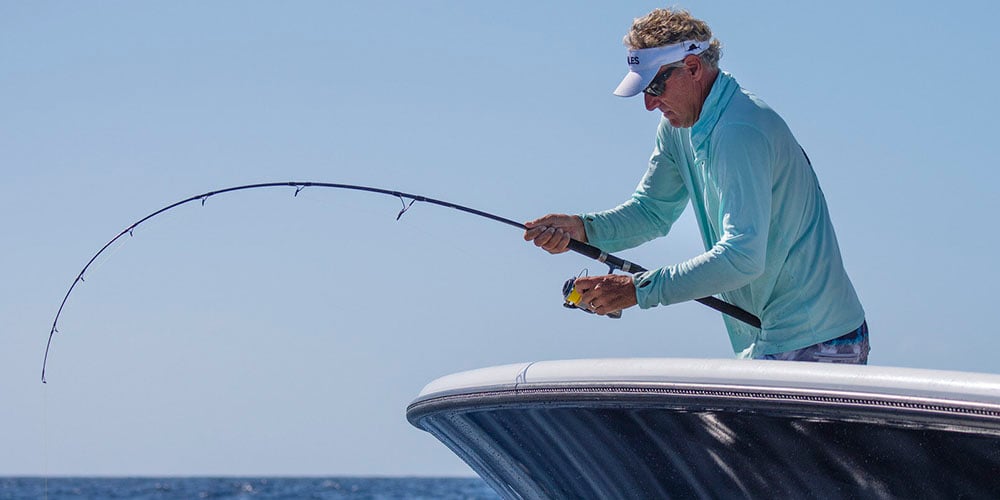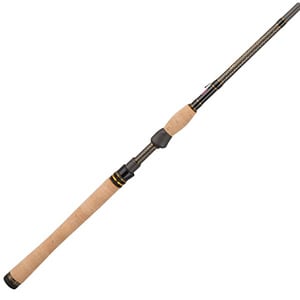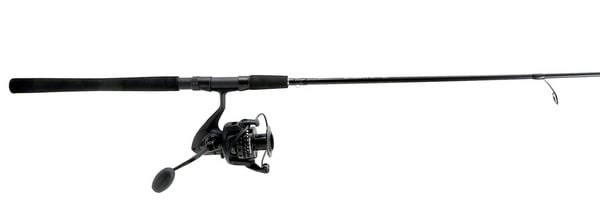
Gear up right and catch some fun!
According to the U.S. Fish and Wildlife Service, there are over 46 million licensed anglers in the United States, which is not surprising, considering just how much fun fishing can be. For the lucky person at the end of the rod, landing a small panfish or battling a big billfish to the boat can be equally satisfying. Add to that the fun of preparing and consuming your catch and you have a win/win! Of course, all this fun is predicated on actually catching fish, which means that in addition to the correct technique, you also need the right rod. If you are new to fishing, selecting a rod that is right for the type of fish you want to catch can be a perplexing task. Mooching for salmon near the shore requires different gear than trolling for billfish on the open ocean or casting for trout on a placid lake.
At the risk of oversimplifying, we've assembled some basic criteria for selecting fishing rods, in the hope of providing guidance to novice anglers. Armed with this modest education, you'll be better able to discuss your fishing needs with one of our experts, who will know more about the local conditions, species, and what kind of tackle works best.
- What Fishing Rods Do
- Fishing Rod Components
- Types of fishing Rods
- What to Look For When Choosing a Fishing Rod
- Conclusions
What Fishing Rods Do

Penn's Battalion Inshore Spinning Rod.
Fishing rods extend the angler's reach and leverage for casting lures or bait, and absorb the shock of a fish when it strikes. Rods are essential to casting and presenting the bait or lure to attract fish. Once a fish hits, the rod is used to set the hook, play and land the fish. Typically, rods also hold the reel and guide the line on and off the spool.
Fishing Rod Components
- Rod or blank essentially describes the pole.
- Guides are the loops attached to the rod to direct the line and are made of lightweight and strong metals such as aluminum or titanium. Inside, guides are often lined with ceramic or plated with chrome to keep line friction and abrasion to a minimum. Big game trolling rods or boat rods designed for heavy duty bottom fishing usually have one or more roller guides with bearings to ensure the line comes off the spool smoothly when the big one strikes.
- Tip-top is the guide at the top that is attached to the rod with a sleeve so it also protects the tip.
- Grips are what the angler holds in his hand. Good all-around rods have grips of synthetic EVA foam, casting rods often have cork grips.
- Seats hold the reel. Casting rods usually have trigger reel seats to accommodate light and compact reels while offshore fighting rods have sturdy lock washers for a conventional reel. Heavy-duty saltwater reels are clamped to the seat with bolts and screws.
- Butt is the fitting name for a rod's inboard end, the one you hold while fishing. So-called through-butt or blank-through-handle construction extends the rod all the way through the handle for added strength and sensitivity. On offshore fighting rods, look for butts that are cut out and covered with a removable cap so they fit into the gimbal of a fighting harness.
Types of Fishing Rods
- Spinning Rods are designed for use with spinning reels. They tend to be light and have ergonomic features such as long handles and ring guides of graduating diameters that reduce the spiraling motion of the line as it passes to and from the reel. They tend to be light and sensitive with ergonomic features that support active fishing techniques, such as a light cork grip and a long butt.
- Conventional Rods are a bit stiffer and range from 6' to 15' in length, depending on the application. A trolling or fighting rod will be shorter and sturdier than a rod used for fishing from piers. Conventional reels are mounted on top of the rod rather than underneath like a spinning reel meaning that the line guides on a conventional rod will be on top also.
- Baitcasting Rods are similar to conventional rods but are meant to be used with baitcasting reels. Most baitcasting rods have a "trigger" on the bottom of the rod which helps the angler palm the reel.
- Specialty rods are designed for specific techniques such as surfcasting or fishing with downriggers. Fishing with downriggers is best done with a flexible rod of approx. 8' to take up slack line quickly after a fish has struck and the line is released from the weighted cable.
- Rod and Reel Combos: Instead of piecing rod, reel and tackle together individually, combos are pre-configured so all components match for specific types of fishing. There are combos for almost any fishing technique. Combos appeal to novices and parents looking for inexpensive ways to introduce their children to the sport or the casual fisherman who wants simple, efficient and cost-effective gear, ready to "just" go fishing. A typical entry-level combo could be a 6'6" medium action rod with a spinning reel and 12–20 pound test.



What to Look For When Choosing a Fishing Rod
- Freshwater vs. saltwater: The stick does not care where it is being used, but the components do. Make sure you choose a rod that is designed and outfitted to withstand corrosion. Guides and tiptops have to be made from non-corroding materials such as stainless steel or graphite, which makes saltwater rods a tad more expensive.
- Length: Obviously, the longer the rod, the farther the reach and the longer the cast. You may have noticed the super-tall poles of 15 feet or more used by surfcasters who need to clear rocks on the jetty and the surf line with their casts. On the other extreme, trolling for large tuna or other big game fish, the rods are stiff and short, simply because they are not used for casting long distances or clearing large objects. In between these two are spinning/casting rods that typically range from 5.5' to 7'.
- Action describes the way a rod bends and depends on the amount of taper, or how fast the rod's diameter changes from thick to thin. Fast tapering rods offer more action meaning they start bending farther down. We like rods that bend more near the top because they are better for bait casting and offer good sensitivity to feel the fish especially when fishing around obstacles or in shallow water.
- Power describes the energy or force needed to bend a rod. The shorter and thicker the rod, the more power to pull up the catch. For practical reasons, fighting and offshore trolling rods are stiff and powerful with very little bend. We recommend less power in casting rods because it helps to set the hook firmly without ripping it out of a soft-mouthed fish like salmon, bass or trout.
- Fiberglass vs. graphite and composites: Fiberglass is the most economical material for fishing rods offering a good compromise between light weight, sensitivity, longevity and price. E- and S-glass are two common varieties of fiberglass, which are combined with polyester and epoxy resins to create durable, lightweight fishing rods. One step up in sophisticated materials is graphite, which is lighter, stiffer and more sensitive but also pricier than fiberglass. We like graphite casting/spinning rods because they are light and nimble, which is good for longer and more active fishing.
- The perfect fit: We strongly recommend matching rod, reel and tackle for an enjoyable fishing experience. Lighter frequently equals better and more fun. Using oversized line or line that is too strong for the rod in may cause the rod to break. Conversely, light line on a heavy rod and reel won't work because it will either break or get fouled on the spool. Location, targeted species, technique and personal preference have a lot to do with choosing the rod that is best for you. West Marine offers a variety of balanced rod/reel combos to meet different fishing needs.
Conclusions
For experienced anglers, buying fishing rods is a matter of personal preference much like the purchase of a pair of shoes: to be right, it has to feel right. Some anglers even build their own rods, meticulously customized to their style, need and liking.
But for starters we believe, you can get excellent rods off the shelf. To select the best rod, first consider where you'll fish and what kind of species you target. This is the first step in making a good choice. For example, if you fish freshwater, you won't need a rod designed for ocean fishing. If you cast for smaller species like trout, we recommend light-to-medium action graphite casting rods with light tackle. If you're bluewater trolling for large tuna, a powerful fiberglass offshore rod equipped with a heavy-duty reel will be your weapon of choice.
Active fishing styles need light rods with ergonomic features that make it easy to cast often and far. The heavier the fish, the sturdier the rod needs to be. Components such as guides, reel seat and butt design will vary with the type of rod. For example, in place of the ceramic guides found on light-action rods, heavy rods designed for offshore fishing frequently have stainless-steel rollers with bearings. Rods designed for landing large billfish are stout with the butt ends designed to fit into a fighting harness or gimbal on a fighting chair.
Our best advice is to match rod, reel and tackle to ensure a most enjoyable fishing experience and improve your chances of making a catch. Novices or casual anglers may prefer pre-configured rod and reel combos so they spend less time assembling the gear and more time fishing.
Related: